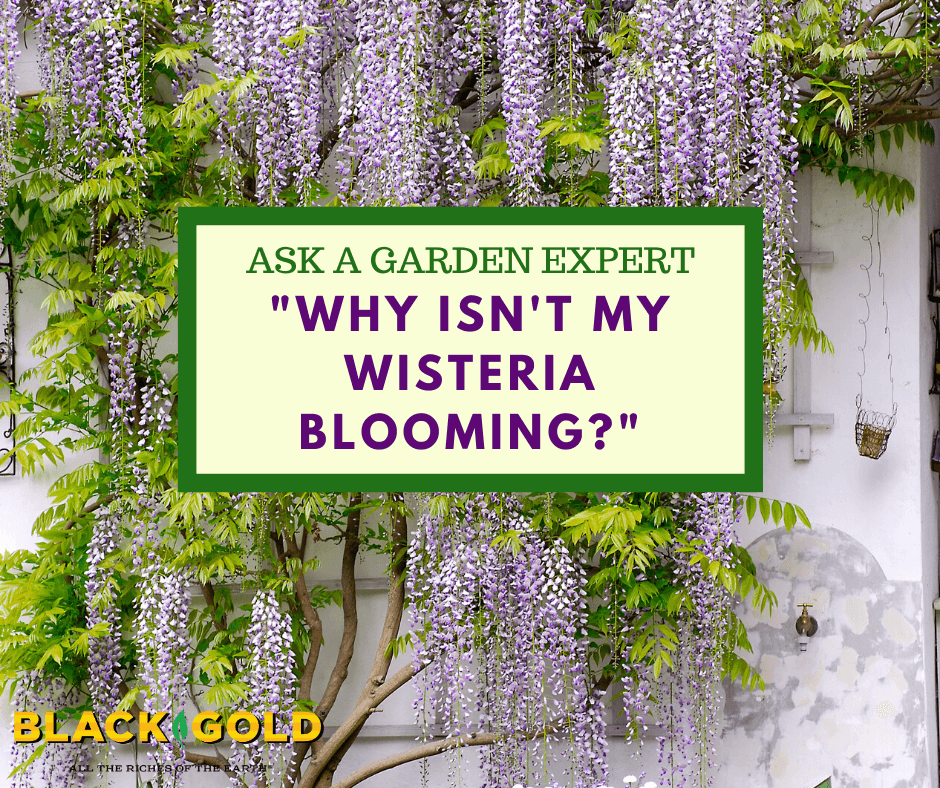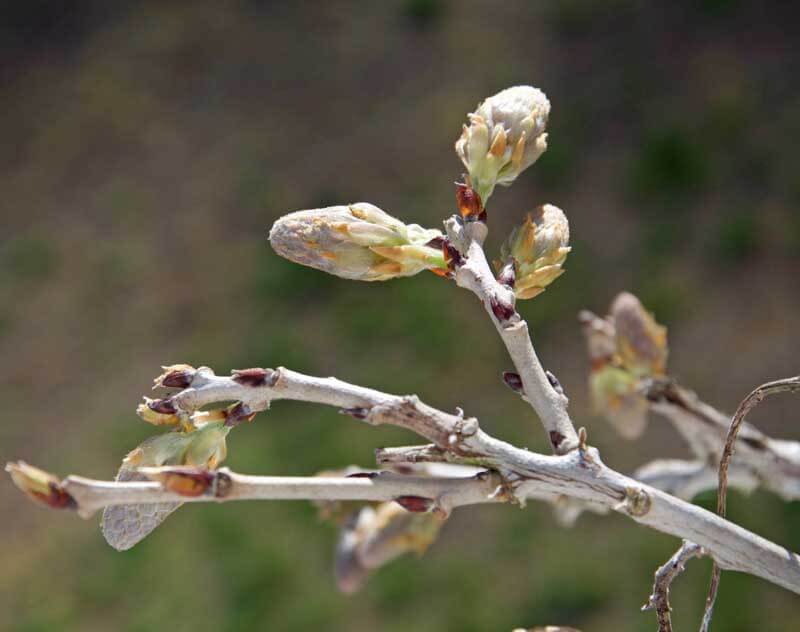
“I have a wisteria vine that is several years old. It bloomed one year ago and was beautiful. Since then it has only about 1 or 2 blooms a year. What am I doing wrong? How can I encourage blooms?” Question from Carol or Drums, Pennsylvania
Answer: Successful flowering wisterias (Wisteria sinensis) are well trained, pruned, and fed with fertilizers designed to encourage blooming. They should also be planted in full sun and slightly acid, fertile soil (amendment with Black Gold Peat Moss is encouraged). The training process takes some time and patience, but if you do it correctly, you will have a spectacular wisteria specimen that blooms well each season.
The first mental note is that wisterias bloom (and look) best when trained to have spare branching and an open structure.
Wisteria Training
Train your wisteria upright as a tree-like standard, along a stone wall, or twining around a very strong structure. Use strong ties to hold the stems in place while the woody vine grows and establishes itself. Keep in mind that wisteria stems/trunks can reach many inches across, so it is essential to give these long-lived vines strong support from the start.
Wisteria Pruning

To maintain spare branching, encourage the growth of just four to six main branches. Identify the main branches that you want and prune away any sprouts or unwanted stems that pop up. Prune and thin the vine in midsummer–several months after flowering–and prune it again in late winter before the flowers and new leaves emerge.
When pruning in spring, avoid the dormant flower buds. It is easy to identify the difference between wisteria flower buds and leaf buds. Dormant flower buds are rounded and large, while leaf buds are pointed and narrow.
Feeding Wisteria
Feed your wisteria with a high-phosphorus fertilizer designed to encourage flowering. Follow the manufacturer’s directions regarding application.
These steps should help your wisteria bloom better.
Happy gardening!
Jessie Keith
Black Gold Horticulturist

